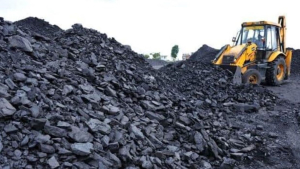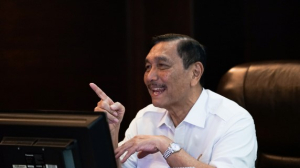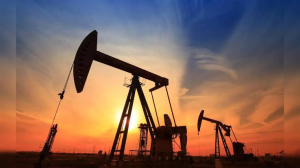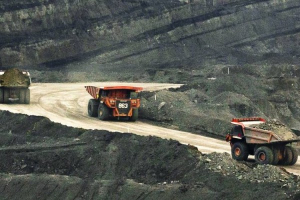Current policies are hindering progress, and government incentives will be essential to support coal companies' energy transition: Ashok Mitra
Ashok Mitra, serves as the CEO of Kaltim Prima Coal (KPC) and COO of Bumi Resources Tbk, a company owned by the Indonesian conglomerate, Bakrie Group. With extensive experience in the mining industry, Mitra has been pivotal in leading one of Indonesia's largest coal producers. In this interview, Mitra shares his insights with Indonesia Business Post, discussing his long-term vision for coal mining companies in the context of Indonesia's energy transition.
PT Kaltim Prima Coal (KPC) is a coal mining company that is based in Sangatta, East Kalimantan, Indonesia. KPC one of the largest operators of open-pit mining in the world with a total coal mining concession mining concessions reaching to 61,543 Ha and supporting areas for mining business activities of 8,371 Ha.
Tell us about yourself and where you come from?
I originally hail from Calcutta. In 2007, I travelled to Indonesia for the first time after the Tata International Group acquired a 30% stake in PT Kaltim Prima Coal (KPC) and PT Arutmin Indonesia. Initially, I served as the Chief Financial Officer (CFO) at KPC, the largest coal company. Later, I was promoted to the role of Chief Executive Officer (CEO) with the approval of all shareholders.
This move marked my departure from Tata Power. As per the agreement with the Bumi Resources Group, I assumed the role of CEO at Kaltim Prima Coal and Director of Operations at Bumi Resources Group. Nevertheless, I continue to serve on the Board of Tata International Singapore.
How’s the company doing right now?
This year, Kaltim Prima Coal (KPC) is expected to produce 55 million tons, while Arutmin is likely to produce 25 million tons. Altogether, Bumi Resources Group is projected to produce around 80 million tons, generating approximately US$6 billion in revenue.
Can you share your long-term vision for your company in the context of Indonesia's energy transition?
From my perspective, Indonesia will continue coal production for at least the next 20 years. This is due to the commissioning of numerous power plants. For instance, if production stops in 2030, it would be unclear who would supply the necessary coal. India is already planning to set up an 8,000-megawatt power plant this year, and China is expected to follow suit next year. Given that these power plants have a lifespan of around 25 years, coal will remain a key component in our long-term vision.
However, we are also exploring coal downstream projects, such as ammonia production. Specifically, we are looking into using synthetic gas to produce ammonia. We have conducted studies, and we will reassess our position once the new government takes over in October. KPC is particularly focused on these downstream initiatives.
Well then, by 2024, which renewable energy do you think your company will be oriented towards?
To be honest, hydropower is only feasible in Sarawak and West Kalimantan. Solar power still has challenges due to insufficient grid capacity to transmit energy over long distances. Solar energy is only available for six to seven hours a day, so we need solutions for the remaining hours, such as battery storage or pump storage. For example, in India, they pump water during non-solar hours to balance the power supply. Strengthening the grid capacity to transport power efficiently is crucial.
Currently, we operate a coal-based power plant with a capacity of 64 megawatts. We are exploring ways to reduce emissions by supplying electricity to local households, which would decrease fuel consumption over time.
There is still much work to be done to make renewable energy a prominent solution. Progress in solar energy in Indonesia has been slow, with much discussion but little advancement.
Because of the policy? Do you think it needs to be reviewed?
Rooftop solar panels are relatively easy to set up and could be a quick win for renewable energy. However, current policies are hindering progress. Despite these challenges, we need to start somewhere. Government incentives would be essential to support this initiative.
If we talk about regulatory challenges, how is your company addressing the pressures related to environmental sustainability and emission reductions? How is KPC handling this?
Looking at the environment and sustainability, the regulations are complicated, but there are also shortcomings in the regulations. Nevertheless, we are working hard to meet these regulatory standards and have been successful so far. For example, we have managed to reduce our emissions by mixing fuel with B35, which is derived from palm oil. This blend has helped us lower our emissions effectively.
What improvements do you think Indonesian authorities could make to facilitate the transition of the coal industry in Indonesia?
To encourage coal companies to move away from coal, Indonesian authorities should consider providing more incentives for coal downstream projects. China's success in this area is partly due to grants and incentives that encourage companies to invest in such projects. For Indonesia to replicate this success, government officials need to prioritise and support these initiatives effectively.
The Ministry of Energy and Mineral Resources (ESDM) has indicated that business entities associated with religious mass organisations (ORMAS) have opportunities to engage in mineral mining in Indonesia. What are your thoughts on this?
As we moved from Contract of Work (CCOW) to Izin Usaha Pertambangan Khusus or Special Mining Business License (IUPK licences), coal companies such as KPC, Arutmin, Adaro, Kideco, Multi Harapan Utama (MHU) were required to relinquish some portion of the land. KPC ourselves relinquished approximately 20,000 hectares of our mining land. That was one big chunk for us.
This process was not unique to KPC but applied across the board. Contrary to some claims, the land was relinquished as part of the licensing process prior to obtaining the new licence.
I was surprised by the news. What’s even the connection between religious institutions and the coal industry?
Well, we had to relinquish the land and we did. The government will have to make the final decision on this matter.
Personally, I believe religious institutions may not have the expertise to manage these operations directly and would likely appoint contractors. However, there could be challenges in ensuring proper checks and balances with religious authorities overseeing these activities, potentially affecting operational effectiveness.
Wouldn't you agree that this could lead to more problems?
Certainly, lacking expertise could lead to challenges. However, if the religious organisations develop the necessary expertise by bringing in qualified individuals, the situation could improve significantly.
Do you have any idea how much production will come from this relinquished land?
The productivity of the relinquished land will depend largely on the government's approach and how effectively they manage drilling and exploration.
Talking about sustainability initiatives, could you outline any current or planned initiatives or partnerships aimed at reducing the company's carbon footprint?
We have collaborated with consultants who conducted studies and proposed various measures, including transitioning to renewables for future sustainability. However, our efforts are somewhat contingent on governmental support through policy measures. Sustainability remains a significant priority for us.
Are there any investment plans for renewable energy projects?
We have been exploring options but have not yet made any investments. However, once the mining in an area is completed, which typically spans about one to two megawatts, we will explore solar energy production as a viable option. Given our mining locations, solar energy appears to be the most feasible choice for us.
Is this due to geological conditions?
No, it's actually due to land issues. People are reluctant because acquiring sufficient land is a major challenge. Land conflicts remain prevalent in Indonesia, posing significant hurdles for any other projects.
It's good that you mentioned land conflicts because my next question is about the community impact. How does KPC balance its industrial operations in East Kalimantan with the well-being of local communities, and how does your company contribute to the Indonesian market and its people?
Since 2005, we have allocated USD 5 million annually to our Corporate Social Responsibility (CSR) initiatives.
In East Kalimantan, we have undertaken various initiatives such as building roads, water treatment plants, lakes, and maintaining roads. We also support livestock programs and empower youth through initiatives like establishing a school for mechanics, where we train and employ them within our company. These efforts aim to contribute positively to the local community and the broader Indonesian market.
What do you think is the most significant economic impact of coal companies in Indonesia?
The negative impact is that people look down on the coal industry because of emissions. However, it remains the biggest source of revenue for the government.
We pay a 28% royalty on sales, which constitutes our largest non-tax revenue contribution. Without this royalty, or If the government considers reducing this royalty, they must find alternative sources to maintain their balance. Balancing receipts and expenditures is crucial, so personally I think, the coal industry will likely thrive unless the government identifies additional revenue streams, as the royalty is currently serves as the largest source of income for the government.
28% of our sales equates to over a billion dollars contributed annually to the government, and this doesn't include taxes. On top of that, another 22% of our profits go towards taxes. After taxes, we further share 10% with the government—both local and central—as mandated by regulations accompanying our IUPK licence. The remaining 90% is distributed among our shareholders.
At the international level, do you have significant exports as well?
Yes, we have substantial exports. For instance, this year we expect to produce 55 million tons, with approximately 41.5 million tons destined for export. That's about 75% of our production. We export to Japan, the Philippines, Taiwan, China, India and other countries, generating significant revenue.
Regarding global competitiveness, how is KPC currently positioning itself to maintain a competitive edge in the global market, and what sets KPC apart from other coal mining companies in Indonesia?
We maintain the lowest production costs among coal producers in Indonesia. Competitiveness in cost and productivity is crucial for leading in our industry.
Additionally, we prioritise quality assurance and supply reliability. We consistently deliver on our promises to customers regarding coal quality, and we strive to meet agreed-upon supply dates. I don't claim that we adhere 100% of the time, but we do so most of the time, which is why our long standing customers remain loyal to us.
What is the most challenging risk you have to manage?
The most challenging risk involves land issues. The land belongs to local villagers, and if we don't act swiftly, prices could rise or they may choose not to sell. These are ongoing issues we monitor closely. We've faced conflicts with villagers in the past, but we've successfully resolved them. It's crucial to address these issues promptly to prevent escalation.
Is there a limit set by the government on the number of areas you can explore?"
The government provides Remaining Known Volume (RKV) approvals, allowing flexibility in exploration activities. The extent of exploration often depends on the compensation offered to villagers and their acceptance. Villagers typically focus on their compensation, while the company prioritises acquiring land efficiently.
What happens to the land after, say, 2040?
The land belongs to the government, and we have mining rights, not ownership. We are obligated to perform mine closure and reclamation, which includes re-vegetating the land once mining is completed. Ultimately, it is up to the government to decide the future use of the land.
How do you ensure transparency in reporting your environmental impact and progress towards net zero?
We ensure transparency through our AMDAL process (Analisis Mengenai Dampak Lingkungan, which translates to Environmental Impact Assessment (EIA)), which involves obtaining environmental approval from local governments. This assessment evaluates the environmental impacts on the community and is conducted regularly.
But concretely, how exactly do you ensure transparency?
Our transparency efforts involve open engagement with villagers and the community. For instance, we've established infrastructure like water treatment plants, a large hospital (RSU Hospital RSUD) in Sangatta, and roads, which are visible contributions they can see and benefit from.
That's what the CSR funds are allocated for. But what about transparency in your operations?
We ensure transparency by regularly informing and allowing government officials and inspectors, both from the central and provincial levels, to visit and assess our operations. We consistently update the government on our activities and practices.
Moving on to another topic, does your company or you personally play a role in influencing public policies concerning the mining and energy sectors?
In my view, government policies are ultimately decided by the government itself. There are associations like the Indonesian Coal Mining Association (APBI-ICMA), previously led by Pandu Sjahrir and now chaired by Priyadi, President Director of PT Adaro Indonesia. However, I don’t know their level of influence. Nevertheless, the government always decides on their own.
In Europe, governments often consult and meet with companies when forming policies.
Here, they also have meetings. However, I'm unsure of the extent to which they can influence policy.
What do you perceive as the primary difficulty or challenge for your company or the industry in general?
Our company specifically faces the challenge of high royalty rates, currently set at 28%, which significantly contrasts with competitors paying only 8%. This difference creates a substantial competitive disadvantage in the market.
We are a debt-free company. But for contractors securing financing from banks and insurance companies proves challenging due to their reluctance to support coal projects. I've personally witnessed the difficulties with local state-owned banks and obtaining insurance for coal operations.
It's quite ironic because governments worldwide have their own agendas pushing for energy transitions towards more green initiatives. Yet, they also derive substantial revenue from the coal industry.
That's why I believe they won't easily abandon it, as coal remains their largest revenue source.
Even as a coal company, you agree that coal has negative environmental impacts, right?
Yes, but even oil has its environmental drawbacks. When you consider electric vehicles (EVs), the lack of charging stations and infrastructure remains a significant challenge. Unless the government implements measures to develop such infrastructure, the progress will be slow.
So now onto personal questions. Where should I invest in the next five years?
Personally, I believe in real estate, gold, and art, such as paintings. These assets tend to appreciate in value over time. In terms of stocks, I see copper as a promising investment due to its increasing demand in the future.
What's one thing that you can keep talking about for hours?
One thing I could discuss endlessly is finance. I also have a keen interest in politics and enjoy discussing it. Additionally, cricket is a passion of mine. I mean, as an Indian, we have a special affinity for cricket (laughs)...
You mentioned art, particularly paintings. What does art mean to you, and which types of artwork do you find most compelling?
For the past decade, we have been collecting paintings by Indian artists from the olden times, whenever we can afford to acquire them.
What are the qualities you most admire in a person?
The qualities I admire most in a person are honesty and frankness. When someone is honest and straightforward about themselves, I find that very admirable.
If you could have dinner with three people, living or deceased, who would they be?
If it's not including my family, I'd enjoy having dinner with someone who's knowledgeable about cricket and politics.
Do you believe in fate? Destiny?
Yes, I believe that everything has its timing. When you're born, you come into this world with a destiny. But you have to strive your hardest to fulfil that destiny or mitigate and overcome any negative impacts it may bring.What is the greatest achievement in your life?
What is the greatest achievement in your life?
My greatest accomplishment is the successful career I've built and the fact that my children are well-settled in their lives.
Already have an account? Sign In
-
Start reading
Freemium
-
Monthly Subscription
30% OFF$26.03
$37.19/MonthCancel anytime
This offer is open to all new subscribers!
Subscribe now -
Yearly Subscription
33% OFF$228.13
$340.5/YearCancel anytime
This offer is open to all new subscribers!
Subscribe now






